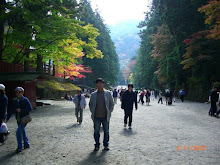A huge explosion that devastated a swath of Siberia a century ago was caused by an asteroid that was much smaller than had previously been believed, according to new research.
The blast produced an enormous fireball over the Tunguska region of northwestern Russia in June 1908 (see map). The so-called Tunguska event leveled trees up to 10 miles (16 kilometers) away. Tunguska-scale events are thought to occur only once every several centuries, but most of them likely take place over oceans or unpopulated areas, he said.
"We have the empirical evidence that they don't hit populated areas every 50 or 100 years, and that doesn't change." However, such events may be more common than scientists know, if Boslough's study is correct, he added.

No comments:
Post a Comment